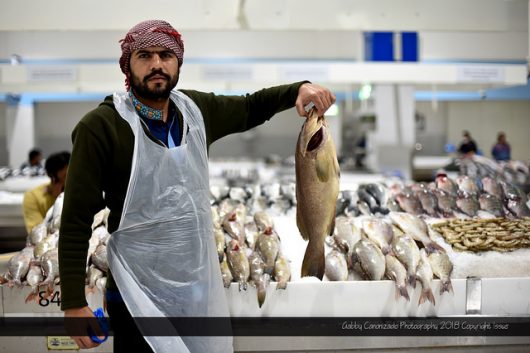Top 10 Facts About Poverty in the United Arab Emirates

In the United Arab Emirates (UAE), skyscrapers, luxury vehicles, high-end shops and fast-food chains line the streets. The country appears to be wealthy and in many ways, it is. However, poverty in the UAE paints a picture of exclusion from the comfort, luxury and beauty that attract so many tourists to the nation.
- The poverty rate in the UAE is 19.5%, juxtaposing the stereotypes that many associate with the UAE. The poverty line in the UAE is defined as an income of less than 80 dirhams ($22) a day.
- Immigrants from South Asia, Egypt and Morocco mostly populate the UAE. Expatriates make up 88% percent of the UAE’s population. This percentage also makes up the majority of the population living below the poverty line.
- Migrant workers often have to pay recruitment agencies to find legitimate work in the UAE. Many become immediately indebted to these agencies, rendering them susceptible to economic hardship.
- Human Rights Watch reported in September 2017 that the UAE adopted a protective labor legislation for migrant domestic workers. This piece of legislation has prohibited recruitment agencies from charging fees. However, there are still glaring weaknesses in UAE labor laws, especially those dealing with migrant workers. Millions of workers, particularly those with an “illegal status” in the UAE, are still paid unlivable wages and forced to work under extreme or unsafe conditions.
- The wealth gap between rich and poor in the UAE is one of the worst in the world, largely due to the amount of welfare and protection afforded to native Emiratis and the amount of neglect toward migrant workers.
- Increasing the inclusivity of the education system is one way that the UAE is working to reduce poverty. The UAE government has begun integrating a National Literacy Strategy while employing the Ministry of Education to create several strategies to develop the education system further.
- The UAE’s failure to integrate its citizens into the private sector of the economy has contributed to its high levels of poverty. Less than 10% of Emiratis work in the private sector, which is largely due to the sociocultural stigma around service jobs. The government has made several attempts to break this association and promote citizen employment in all sectors. It does so through education initiatives. However, the welfare system allows many Emiratis to work very little or not at all while still maintaining their livelihood.
- The Emiritization initiative has been in place for decades. It requires every company with more than 100 employees to have a certain number of Emiratis on its payroll. The program has been effective in the public sector. However, it has largely failed to address the lack of workforce participation within the private sector.
- Expatriates are fined for overstaying their visas and prohibited from leaving the country until their debts are paid. Those who default are fined 50 dirhams (about $13) daily. This policy invokes economic desperation on top of the desperation caused by recruitment fees, which has made immigrants especially vulnerable to labor exploitation in the UAE.
- According to The News Tribune, officials reported that 25,000 migrant workers exceeded their stay in 2017 alone. The UAE has recognized the difficult situation created by its fine policy. On August 1, 2018, the government launched an amnesty program, forgiving all fines associated with overstaying visas and granting new visas.
These facts about poverty in the UAE reveal several systematic issues within the country. The improvements made to workers’ rights in the UAE cannot overshadow the immense amount of work that has to be done to provide an avenue of escape for impoverished migrant workers. The abuse of migrant labor, on which the UAE largely depends, is perhaps the biggest problem it must tackle to address the overarching issue of poverty.
– Julius Long
Photo: Flickr
Updated: May 30, 2024
